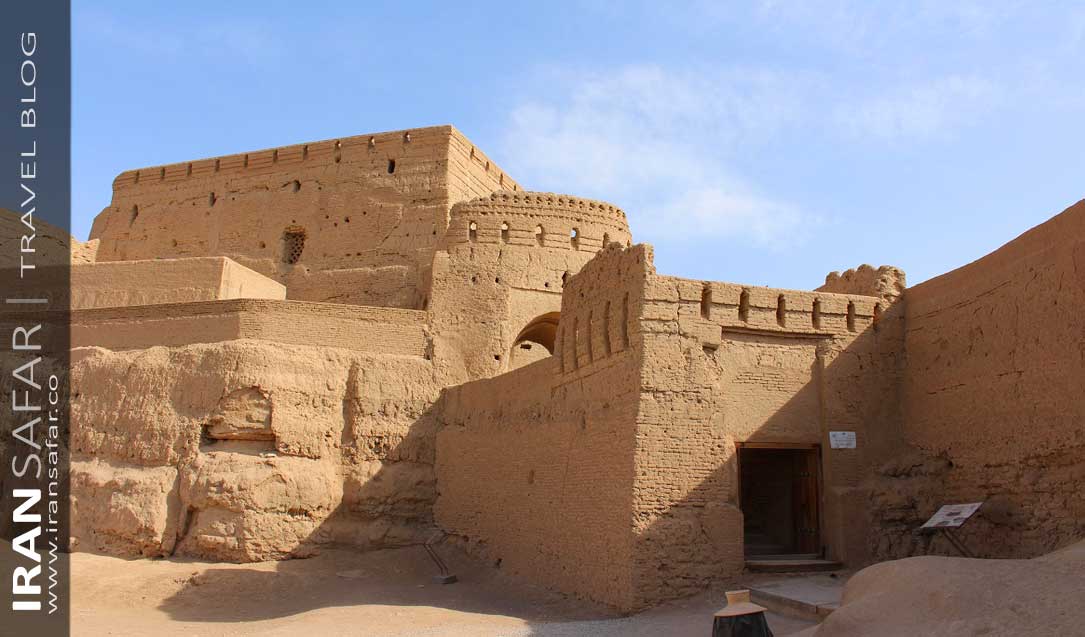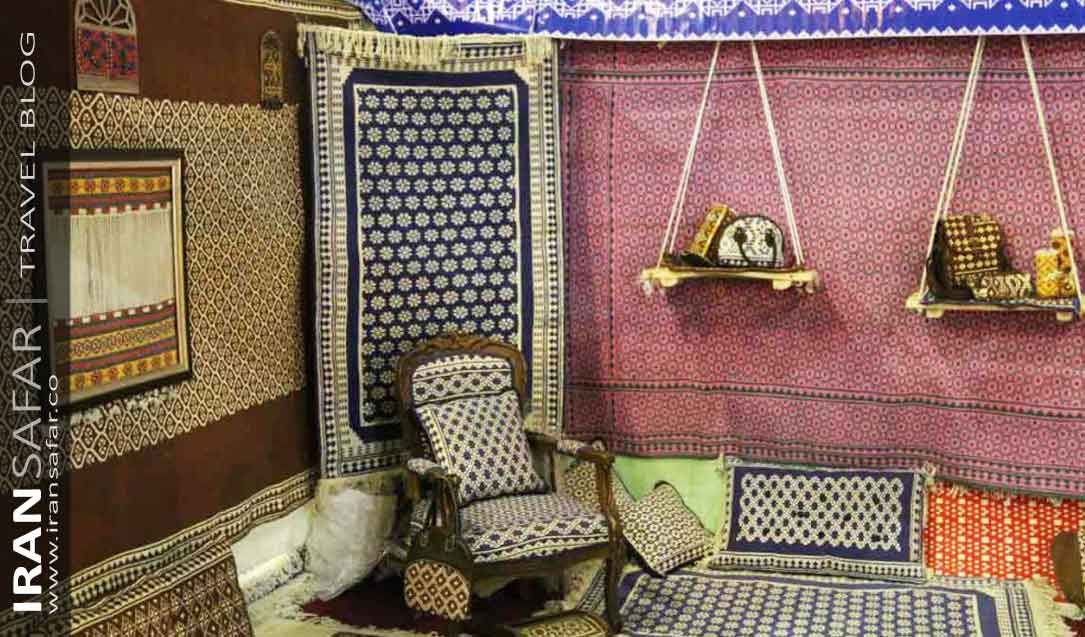If you’re an adventurer at heart and love to uncover hidden treasures from the pages of history, Meybod in Yazd province of Iran is a place that should be on your travel radar. This city, with over a thousand years of rich history, has a story to tell, and it’s nothing short of fascinating. Situated just 45 kilometers from Yazd, Meybod has cemented its place as the second urban and commercial center of Yazd province. Thanks to its invaluable historical significance, the entire city is proudly listed as one of Iran’s historical monuments.
In this article, we’ve incorporated the provided information about Meybod, including its history, historical attractions, and the significance of Narin Castle and the Pigeon Tower.
 Narin castle of Meybod
Narin castle of Meybod
History of Meybod
Meybod is a city that has had a special place in history. It is understood that the foundation of Meybod dates back to pre-Islamic era. In the local histories of Yazd, the Sassanid city of Meybod has been attributed to several kings of this family, including Yazdgerd, Qobad and Anushirvan, and one of the generals of Yazdgerd III has been considered the founder of the city. The foundation of the first construction period of Meybod citadel and city is not completely clear and remains in an aura of ambiguity and mixed with mythological stories, but the central core of Meybod, which was Narin Qala, is far older and based on the new archaeological findings, the history of the settlement in this castle reaches the end of the third millennium and the beginning of the second millennium BC.
- Legends and Lore
The city’s origins are shrouded in mystery. According to mythical tales, the footsteps of the legendary Solomon once graced the streets of Meybod. His presence has left an indelible mark on the town’s identity. As you explore the winding alleyways and ancient structures, you can almost feel the whispers of ancient legends in the breeze.
- Historical Evidence
Coins dating back to the Sassanian Empire era found in Meybod are a testament to its historical significance. During this time, the town served as a hub of trade and culture. Its thriving economy and strategic location made it an essential part of the ancient world.
The Muzaffarid dynasty, in its zenith, designated Meybod as the capital of Iran. This decision not only underlines the town’s importance but also solidifies its place in Iranian history. The echoes of that era still reverberate through the streets, where history lives on in every corner.
- A Hub of Knowledge and Culture
During the Safavid Empire Era, Meybod Town transformed into a thriving hub for Persian poets and intellectuals. The town became a nurturing ground for the arts and sciences, fostering creativity and innovation. It was here that great minds converged, sharing ideas, and leaving an indelible mark on Persian culture and literature.
Historical attractions of Meybod
One of the main reasons that have caused Yazd to shine like a jewel in the heart of the desert and host countless domestic and foreign tourists throughout the year is the existence of numerous historical attractions. Among the most famous historical attractions of this city, which are famous all over the world, the following can be mentioned
1
Narin Castle
In the heart of Meybod Town lies a true marvel of human history – the Narin Castle locally known as Narin Ghal’eh. Not only is it the crown jewel of Meybod’s attractions, but it’s also a testament to the ingenuity of ancient architects. This adobe construction, one of the world’s oldest, carries a history that spans over 5000 years. While the castle is commonly associated with the Sassanid era (224 – 639 AD), the discovery of pottery fragments and ancient coins hints at a history that reaches even further back in time. It’s believed that this imposing fortress was built more than 5000 years ago.
The strong and stable Narin fortress can be seen on a high hill, which is considered one of the biggest signs left from different periods. This castle is a seven-story building with a unique architecture and clay walls that the passage of time has not been able to reduce its glory and sturdiness. The Naryn Ghale is a symbol of strength and fortification. With its five formidable fences and gates, it stood as an impenetrable sanctuary in times of war. For generations, people sought refuge within its walls, safe from the chaos that raged outside. It was more than just a castle; it was a guardian of lives. During the early Islamic era, it served as a residential castle, where people went about their daily lives. However, as the sands of time continued to shift, the castle was eventually abandoned, and its secrets lay dormant.
Also Read – Famous Castles of Iran
2
Pigeon tower of Meybod
Considering the great importance of bird manure; Pigeons are especially important in the leather industry and agriculture, and they are used as one of the strongest non-chemical fertilizers. In all parts of Iran, there are buildings called pigeon lofts, and you might be surprised to see them. Meibod Pigeon House in Yazd is one of the oldest and most valuable historical buildings, where there are about four thousand pigeon nests, and with its cylindrical adobe building and unique architectural type, it has provided ideal conditions for keeping pigeons. . This building has been registered as one of the historical monuments of Iran and can be considered an excellent and unique choice among the historical attractions of this city.
Also Read : Pigeon Towers of Iran
3
Caravanserai of Meybod
One of the biggest signs left from the Safavid era allover Iran is the many and important caravanserais, one of the best examples of which can be seen in Meybod of Yazd. Because of its ancient history and extraordinary architecture, it is included in the list of national monuments of Iran.
In its heyday, Meybod served as a crucial trading hub along the Silk Road. To cater to the needs of merchants and travelers, the city boasted a network of caravanserais. These timeless relics, with their intricate architectural designs, have witnessed countless tales of trade, culture, and exchange, making them a vital part of Meybod’s heritage.
Also Read – Famous Caravanserais of Iran
4
Meybod museums
During your trip to Meybod, if you are looking to visit old and historical objects, visiting the museum will be your best choice. Fortunately, the museums of this city are located in historical buildings, and choosing each one is an arrow with two marks. The most famous museums in Maybod are:
Zilou Museum
It is enough to visit the old caravanserai of this city during your trip to Maybod and find the Zilou Museum there to see one of the most unique collections of old Zilous. Of course, it should be noted that such a museum can be seen only in this city and there is no similar example anywhere in Iran. One of the most important and valuable ziloos in this museum is the one belonging to Meybod Jame Mosque, which is very old and has great historical value.

Zilou or Ziloo stands as one of the oldest handicrafts of Yazd province, recognized as one of Iran’s simplest Persian carpets. This art form has earned a prestigious place as a national treasure, with the city of Meybod gaining global recognition as the epicenter of Zilou craftsmanship. Zilou, woven with cotton thread, serves as a unique underlay and floor covering. Its cotton composition is well-suited for desert environments, providing a cool and comfortable surface. While it shares some similarities with Kilim, which are typically woolen, Zilou’s distinction lies in its cotton foundation. The oldest remaining Zilou dates back nearly 800 years, and an exemplar from that era is now preserved in the Zilou Museum of Meybod. Despite facing the risk of fading into obscurity, this art form experienced a revival in Meibod a few years ago. Presently, over 200 artisans in Meibod contribute to the continuation of this rich cultural tradition.
Post Museum
Post Museum or Chaparkhaneh is another historical and popular collection whose building belongs to the Qajar period and was once used as a post office and a place to store government documents and their letters. Getting to know the ways of sending letters in the distant years is one of the best experiences that you can add to your other life experiences by choosing this museum.
Pottery Museum
Among the old buildings in Meybod, you will definitely hear the name of the Haj Muhammad Ali Reservoir and we suggest not to miss visiting it. This collection is actually left over from the Qajar period and currently it has collected more than 100 jars and very valuable pottery objects. It shines as one of the most famous museums of this city.
5
Meybod Ice House
Meybod’s Ice House, or Yakhchal, is a remarkable testament to the ancient refrigeration techniques in Iran. It dates back to a time when the preservation of ice was essential in this arid landscape, especially for the cooling system of the wind towers, revealing the innovative minds of ancient Iranians.
Meybod’s Ice Houses are another architectural enigma that has captured the imagination of historians and travelers. These ancient structures, believed to date back over 200 years, were ingeniously designed to store ice and food in the heart of the desert. This innovative approach to refrigeration reflects the resourcefulness of Meybod’s early inhabitants.
Read More – Iranian Ice House
Craftsmanship & Heritage
Meybod Town is renowned for its traditional crafts and industries. The town’s ceramics, textiles, and carpets are famous for their quality and craftsmanship. These skills have been passed down through generations, weaving a rich tapestry of cultural heritage.
In conclusion, Meybod is a town that transcends time and connects the dots of Iran’s history. From legends and dynasties to architectural wonders and traditional crafts, Meybod Town is a living testament to the depth and diversity of Iranian culture. It invites you to step into a world where history breathes, and where every corner is a page waiting to be turned in the book of time.
So, if you’re an adventurer at heart, ready to explore the depths of history, Meybod should be on your travel list. It’s a place where the past comes alive, and where the stories of legends are etched in every stone.
Also Read – Architectural Features in Ancient Persia
Meybod FAQs
Q. What is the best time to visit Meybod?
The best time to visit Meybod is during the spring and fall when the weather is more temperate, making outdoor exploration more enjoyable.
Q. Are there guided tours available in Meybod?
Yes, there are guided tours available in Meybod that provide in-depth insights into the town’s history and culture.
Q. Can I purchase traditional handicrafts in Meybod?
Absolutely, Meybod is known for its handicrafts, and you can purchase items like carpets and ceramics as souvenirs.
Q. Is it safe for tourists to visit Meybod?
Meybod is a safe and welcoming destination for tourists, with friendly locals and a low crime rate.
Q. How can I get to Meybod from Yazd?
Meybod is easily accessible from Yazd by road, and the journey offers beautiful desert scenery along the way.



Comment (0)